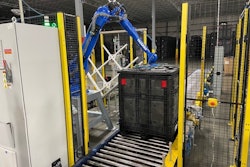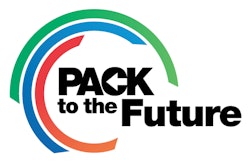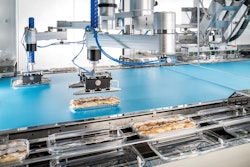Quick hits:
- Per an AIM webinar, IoT stickers are disposable form factors without batteries that work with devices like smart speakers, wifi access points, micro gateways, and phones.
- Low cost energizer devices will emerge soon, costing on the order of $10 or $20, that can provide LoRa and other kinds of Bluetooth energy to energize tags that talk to the cloud.
- Sensing goes beyond location traceability to offer insights into medical product consumption, produce aging, consumer engagement and more.
- A key takeaway is the “wisdom of the crowd” phenomenon, in which data from multiple sensors is aggregated for a higher degree of accuracy than would be possible with a single, ultra-precise sensor.
Related to this episode:
- 9 Life Science Use Cases for IoT Stickers
- Fresenius Kabi Goes Above and Beyond DSCSA Requirements
- How and Why Pharmaceutical Manufacturers Are Applying Artificial Intelligence
- Download PMMI's Cybersecurity White Paper to learn the most important actions you can take now to avoid a costly cyber attack.
 | Read the transcript below: |
Hello, I’m Keren Sookne for Take Five video with Healthcare Packaging.
Today we’re talking IoT stickers in the life sciences.
We certainly have a lot of expensive or high-end consumer goods connected to the Internet of Things, but Steve Statler, senior VP at Wiliot, said at an AIM webinar that he feels the real opportunity is in connecting food products, medicine, and supplies where the volume is in the trillions and the impact is much more significant.
Wiliot is a provider of “sensing as a service” anchored on smart/IoT stickers. The sticker is a disposable form factor without batteries that can give insights that weren't possible before. They don't rely on expensive scanners, but work with devices like smart speakers, wifi access points, micro gateways, and phones.
So why now?
Statler said that low cost energizer devices will emerge soon that use commodity radios. These will cost on the order of $10 or $20, and can provide LoRa and other kinds of Bluetooth energy to energize tags that talk to the cloud.
Wiliot is focusing on access control, privacy, sensing, and flow control to allow a hospital with potentially millions of tags to have a view of where doctors, patients, equipment, supplies, and medicines are.
In food, they’re currently working on an application where the stickers are applied to plastic produce crates. They don’t just sense whether the crates are full or empty, but also the change in products over time such as water content as zucchinis age.
And this brings us to an important point. Statler highlight the “wisdom of the crowd” phenomenon, where a company takes data from multiple sensors—temperature, for example—and when they aggregate the readings, they can obtain a higher degree of accuracy than would be possible with a single, ultra-precise sensor. In this case the whole may be greater than the sum of the parts.
If companies and systems take advantage of what the sensors have to offer, they may be able to have (1) a continuous view of item locations and (2) demand signals, which let them know when a product is used, whether it’s a device in a hospital, or something used by a consumer in their home.
There are a number of ways this technology can be deployed, including but not limited to:
The aforementioned asset tracking: They’re currently working on a project in a pharmacy with their partner Blyott to get a real-time view of where drug containers are. In this case, applying these stickers means they’re able to existing containers and the existing automatic dispensing machines.
A logical extension of asset tracking is finding grey market diversion, where real products are being used where they shouldn't be.
Next… cold chain traceability which of course, is not a new concept in food or life sciences. But with failures in the field costing billions, it’s crucial to keep up to date with technology that prevents batch losses. Wiliot is working with Avery Dennison, Cloudleaf and a number of converters to create a vaccine vial for a major pharma company that can track the vial temperature in real time.
Consumer engagement and trust is a growing field where consumers can authenticate a product, find its origins, and interact with instructions, recipes, loyalty programs and more.
We’re getting to the end of our talk today. As always, there’s a lot more detail in the article, so if you want more information on other use cases, including the trend of consignment deliveries in hospitals, patient adherence, product replenishment, product disposal cues and more, check out the link [on screen].
That’s all for today. See you next time!


























